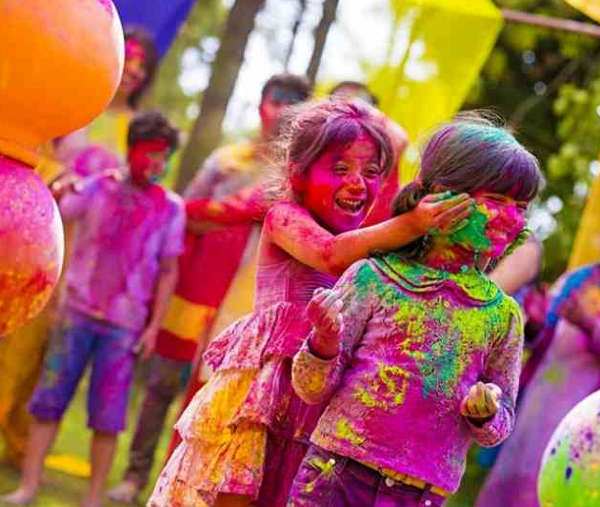Holi is a festival of colours and is also known as Rang Panchami. It is a festival that marks the start of summers and makes an end to the winter season. Or we can also say it as it is celebrated when the season changes.
The date of Holi is different every year in India. And, similarly, the weather also keeps on changing during the festival of Holi. It is usually celebrated during the end of winter, on the day when full Moon is seen in March every year. This time, Holi is on March 10, with Holika Dahan on March 9.
On the eve of Holi, large bonfires are lit to mark the occasion and to burn evil spirits. This is known as Holika Dahan. Holika Dahan also is known as Choti Holi .
How Holi is celebrated in entire India?
In the states of West Bengal and Odisha, the Holi festival is celebrated as Dol Jatra or Dol Purnima, on the same day as Holika Dahan. Similar to Holi, the Dol Jatra celebrations are dedicated to Lord Krishna.
Holi also called as Phakuwa or Doul is celebrated all over Assam. Locally called Doul Jatra, it is celebrated over two days. On the first day, the burning of clay huts are seen in Barpeta and lower Assam which signifies the legends of Holika. On the second day of it, Holi is celebrated with colour powders.
Holi is known as Phaguwa in the local Bhojpuri dialect. On the eve of Phalgun Poornima, people light bonfires. They put dried cow dung cakes, the wood of the Araad or Redi tree and Holika tree, grains from the fresh harvest and unwanted wood leaves in the bonfire. Next day the festival is celebrated with colours and a lot of frolics.
Holi is locally called Ukkuli in Konkani. It is celebrated around the Konkani temple called Gosripuram temple. It is a part of the Goan or Konkani which lasts for about a month.
In Gujarat, Holi is a two-day festival. On the evening of the first day people light the bonfire. People offer raw coconut and corn to the fire. The second day is the festival of colour or “Dhuleti”, celebrated by sprinkling coloured water and applying colours to each other.
In Jammu and Kashmir, it is a high-spirited festival to mark the beginning of the harvesting of the summer crop, with the throwing of coloured water and powder and singing and dancing.
In Punjab, the eight days preceding Holi are known as luhatak. During Holi in Punjab, walls and courtyards of rural houses are enhanced with drawings and paintings similar to rangoli in South India, Mandana in Rajasthan, and rural arts in other parts of India. This art is known as chowk-poorana or chowkpurana in Punjab and is given shape by the peasant women of the state.
Kumaoni Holi in Uttarakhand includes a musical affair. It takes different forms such as the Baithki Holi, the Khari Holi and the Mahila Holi. In Baithki Holi and Khari Holi, people sing songs with a touch of melody, fun, and spiritualism.
The festivities at Vrindavan is celebrated by throwing colors in the morning. In the afternoon, the action moves onto Mathura, where there’s a colorful Holi procession. Plus, the throwing of colors the next day. The women of Barsana and Nandgaon villages, near Mathura in Uttar Pradesh, beat up men with sticks in the week before Holi also known as Lathmar Holi.
Source: Skymetweather
Image Courtesy: CambridgeMontessoriGlobal
You may also like
-
India Can’t Afford to Remain Stagnant at this Juncture, Says PM Modi; Asks People to Buy Locally-Made Goods
-
Stolen Artefacts to be Returned to India from Scotland Museums
-
Legendary Singer Lata Mangeshkar Passes Away At the Age of 92
-
Netaji’s Hologram Statue at India Gate
-
10th Century Stone Idol of Goat Head Yogini IllegallyRemoved from A Temple in Lokhari, Banda, UP Being Returned to India
